Which cruise ships have the most space per passenger?
Head to any cruise line website or look at any brochure, and you’re sure to see people having fun on the ship… but noticeably absent are any other passengers. Anyone that’s sailed before knows the reality is far different.
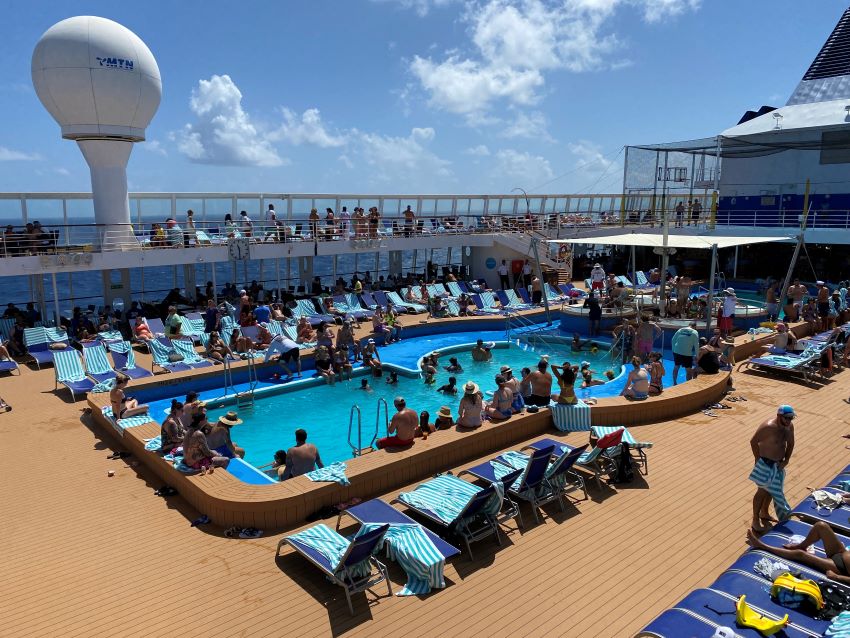
Today’s modern ships can carry upwards of 6,000 people at double occupancy (two passengers to every cabin), and even more when completely full.
And while not everywhere on the ship is packed — there are still plenty of places to get away from the crowd — many spots will have plenty of people. At times, it can actually be so many people it can be uncomfortable.
So what if you want to sail with the most space possible? Our list below should help.
Calculating the Most Space Per Passenger for More Than 100+ Cruise Ships
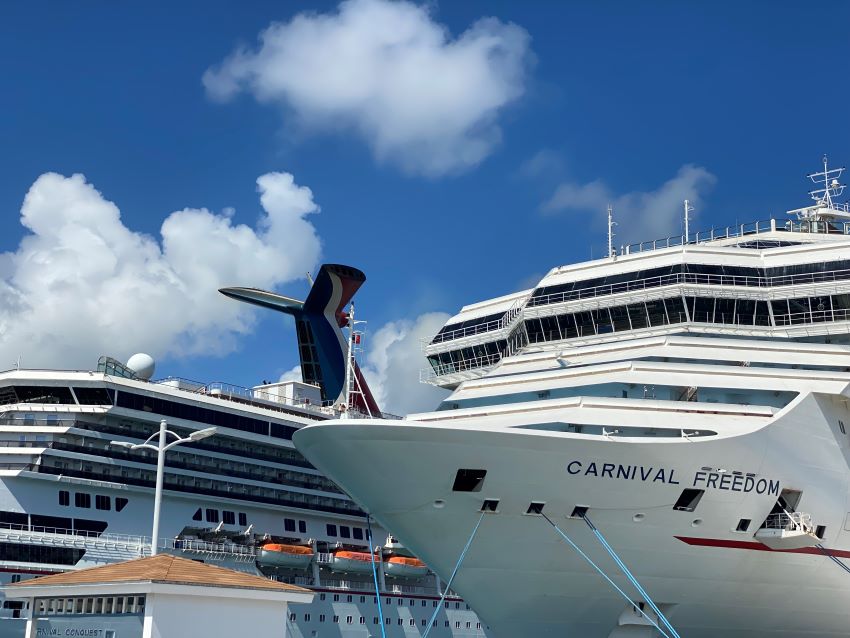
There’s no arguing that over the past decade or two cruise ships have become significantly larger. About 20 years ago, a “large” cruise ship might come in at 70,000-90,000 gross tons (a measurement of a ship’s size).
Today, the bigger ships start around 140,000 gross tons and go up to 250,000 gross tons. That’s up to more than three times the size as just a couple of decades ago.
The number of passengers continues to increase as well. An older ship might carry “just” 2,000 to 3,000 passengers. Numbers today are double that.
But just because a ship carries more passengers doesn’t mean it’s more crowded. Remember, the overall size has gone up as well, meaning more space on the ship.
Still there are definitely some ships that carry more or fewer passengers than other ships of their size. The result? You can sail a ship that offers more (sometimes considerably) more space per passenger. If you’re a fan of having a little more elbow room on your cruise, selecting those ships with a larger “space ratio” — the ratio between a ship’s tonnage compared to the number of passengers — can be a smart move.
That’s why we calculated this ratio for more than 100 cruise ships across multiple lines. This will give you a better idea of which ships may feel more relaxed and which may feel more crowded. The higher the ratio, the greater the size of the ship on a per-passenger basis. Conversely, the smaller ratios mean that the ship is smaller per passenger.
You can search the table below to rank the ships based on size, passengers, or space ratio, and even search for specific ships.
There are a couple of things you should know about this table. First, just like any resort, every cruise ship has its own design style. Some are built to be wide open, which can help them feel more spacious even if they are the same size and carry the same number of passengers as another ship.
Others look to be more cozy with smaller open spaces, which despite ample size per passenger overall, can make them feel more crowded.
In other words, more goes into the "feel" of the spaciousness of a cruise ship than just its overall tonnage compared to number of passengers. Design matters too.
Second, this ratio is calculated based on the double occupancy figures for the ship. Many ships, however, sail at more than double occupancy (meaning some rooms have 3+ passengers), so the ratio on your specific cruise may be slightly different than what's shown above.
The 10 Cruise Ships With the Most Size Per Passenger
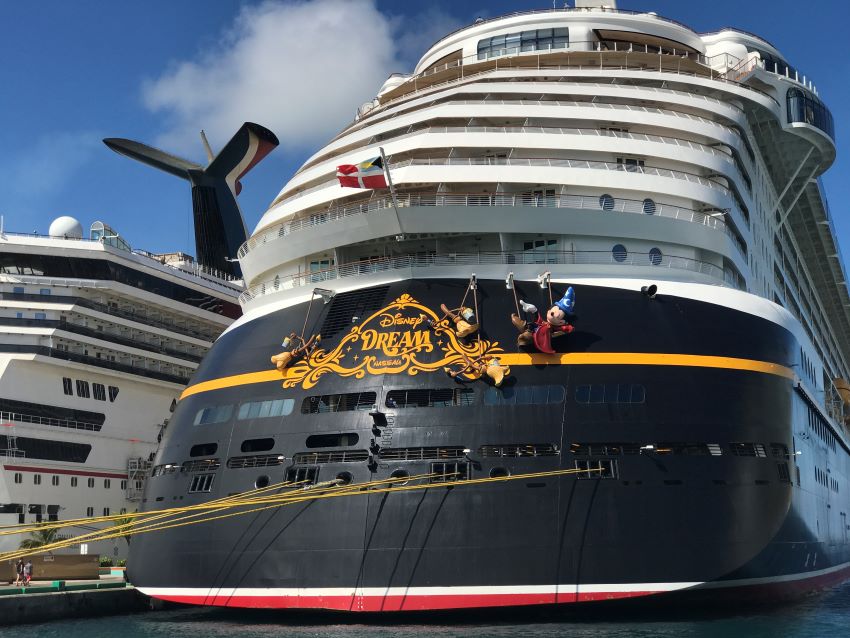
Looking for the most room per passenger on your next cruise? Ships that have a space ratio of 40 or more are a good place to start. However, if you want the best of the best, then we suggest looking at those with a ratio above 43.
In our list of more than 100 ships, only 16 (around 15%) of ships meet this benchmark. The ships at the top of the list include Norwegian Cruise Line's newest ships -- Prima and Viva -- which come in at 142,500 gross tons and carry 3,100 passengers at double occupancy. That equates to a space ratio of 46.
But the overall winners are Disney ships, like Disney Wish. They top out with space ratios in the high 40s to high 50s. What you need to know here is that Disney's ship designs are a little different than other ships, which increases the space ratio.
While most ships are built with two passengers in mind for the cabin, Disney is much more focused on families. That means ships are designed with more passengers in mind per cabin, reducing the double occupancy rate (which is just the number of cabins times two people).
Here are the 10 cruise ships with the most space per passenger based on our calculations:
- Disney Wish (57.4)
- Disney Fantasy (52.0)
- Disney Dream (52.0)
- Disney Wonder (48.0)
- Disney Magic (48.0)
- Norwegian Prima (46.0)
- Norwegian Viva (46.0)
- Coral Princess (45.8)
- Icon of the Seas (44.7)
- Celebrity Apex (44.5)
The 10 Cruise Ships With the Least Size Per Passenger
When it comes to the ships with the least amount of size per passenger, one cruise line leads the list -- Carnival. In fact, all of the ships on our list with the smallest space ratios come from the cruise line.
In general, the space ratio for Carnival ships runs about 33-37 on average, including the lowest-ranking ship, Carnival Elation. That ship has a gross tonnage of nearly 72,000 and carries 2,190 passengers. That equals a space ratio of 32.8.
It also goes to show that newer, larger ships with more people don't automatically mean more crowded. Elation started sailing in 1998 and many larger ships built more recently have higher ratios.
Here are the 10 cruise ships with the least size per passenger based on our calculations:
- Carnival Elation (32.8)
- Carnival Firenze (32.8)
- Carnival Venezia (33.1)
- Carnival Panorama (33.3)
- Carnival Horizon (33.7)
- Carnival Paradise (33.9)
- Carnival Vista (33.9)
- Carnival Radiance (34.0)
- Carnival Sunrise (34.0)
- Carnival Celebration (34.1)
No Perfect Measure of Space... But a Good Start
One final thing to keep in mind is that much more goes into the feeling of space around the ship than just the space ratio.
As mentioned above, ship design can play a major factor. A ship may be large, but if the design chops up the space, that can make it feel more crowded. The capacity on your specific cruise can also vary. It may be your specific cruise is heavily booked or sailing under the double occupancy, which will make a difference in how crowded it feels.
Still, for a baseline of how much room there is per passenger, the space ratios listed above should give you a great idea.


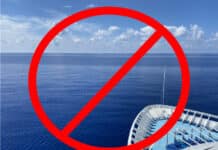







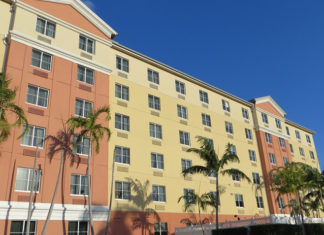

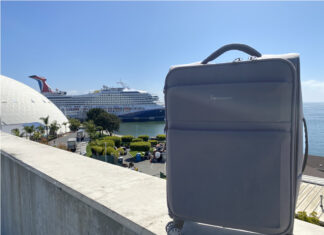
Click bait. Only includes mainstream lines and uses Gross Tonnage. Using that method, the Regent Explore slides in at 74.
Glad you enjoyed it! Please provide the link to the list that you put together.
Article Title is wrong. Not ‘EVERY CRUISE SHIP’ is included in the article.
Try looking at lines such as Seabourn or Silversea. These figures are really only mainstream and leave out some of the luxury lines.
Space Ratio’s are fake numbers! Gross Tonnage includes ALL the interior volume of the ship .. crew only areas, engines rooms, the works .. space that a passenger would never have access to.
What about the Cunard Queen Elizabeth ? At 90 400 tons and passenger count of 2116 , it’s space ratio is 42.7 thereby landing at 20th . Doesn’t Cunard count ?
In your space ratio list, you left out Holland America and Viking.